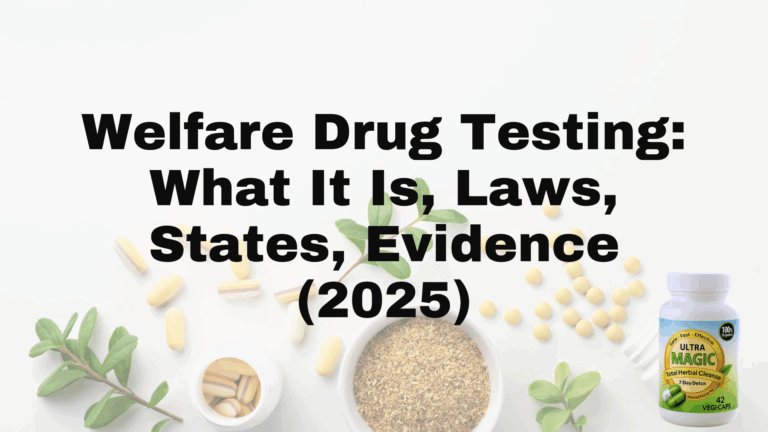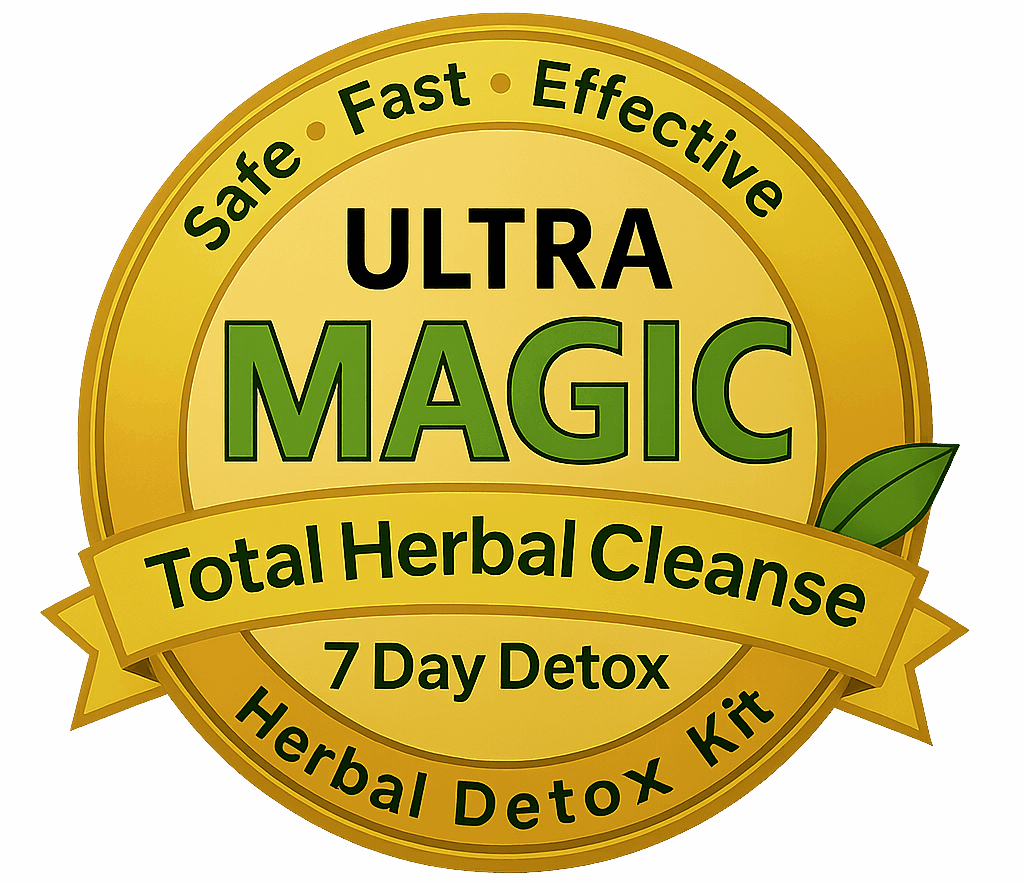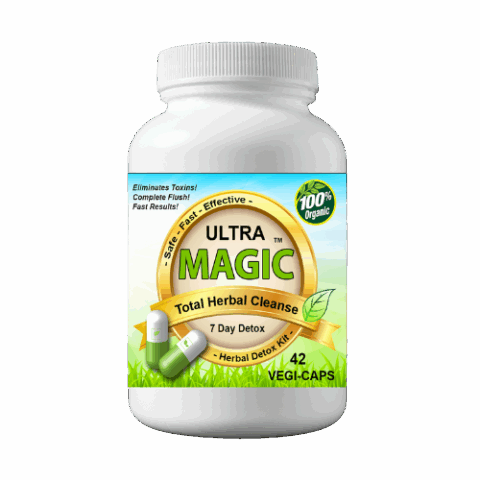
Welfare Drug Testing: What It Is, Laws, States, Evidence (2025)
Welfare drug testing is a set of government policies that require some applicants for or recipients of public assistance to complete a substance-use screening and, when flagged, take a drug test as a condition of eligibility or continued benefits. Most rules focus on cash aid programs such as Temporary Assistance for Needy Families (TANF), with a few extending to other safety-net programs or specific local initiatives. In 2025, these policies form a patchwork: some states mandate screening with “reasonable suspicion” testing, others have paused or repealed requirements, and a few cities are experimenting with new models that connect testing to mandated treatment.
This guide explains what welfare drug testing means in practical terms—and what it doesn’t. You’ll learn which programs are typically targeted; how screening tools and tests work (and their limits); what happens after a positive test or refusal; the latest federal proposals and 2025 state and city actions; constitutional guardrails; the best-available evidence on costs, accuracy, and outcomes; who is actually affected; common arguments on both sides; and emerging alternatives that may work better. By the end, you’ll have a clear, current, plain‑English view of where policy stands and where it may go next.
What programs are typically targeted (TANF, GA, SNAP, Medicaid, housing)
In practice, welfare drug testing concentrates on cash aid—especially TANF—where states screen applicants and test only when there’s “reasonable suspicion.” Across the states that run these programs, the rules sit inside TANF or closely related cash-assistance tracks rather than the broader safety net. In 2024–2025 debates, some officials also floated expansions to other programs, but those remain limited.
- TANF cash assistance: The primary focus in states with testing; adults may be screened and tested based on suspicion.
- TANF-related subprograms: Some states apply screening to subsets (for example, non‑custodial parent programs or employment‑linked TANF components).
- Local General Assistance (GA): Cities and counties with their own cash aid sometimes add screening/mandated treatment (e.g., San Francisco’s Prop F for single adults).
- SNAP and Medicaid: Frequently proposed, rarely implemented at scale due to legal and administrative barriers; attempts have surfaced but are not widespread.
- Housing assistance: Not typically included in state testing laws; most testing activity stays within cash‑aid contexts.
How screening and testing usually work
States rarely blanket‑test everyone. Welfare drug testing typically follows a screen‑then‑test model built around “reasonable suspicion.” Applicants or recipients answer brief self‑report tools (for example, DAST‑10 or proprietary SASSI screens) or sign declarations about recent illegal drug use. Some agencies also review available records or observable indicators. Only those who screen in are asked to take a drug test, and in practice that’s a small subset of applicants; many programs limit screening to adult TANF recipients while children’s benefits are treated separately.
- Initial screening: A short questionnaire or signed statement about recent use starts the process.
- Trigger thresholds: Specific scores, admissions, or red flags prompt testing; tools like SASSI are often copyrighted and undisclosed.
- Scheduling and window: The agency arranges a test to be completed within a set timeframe; missing it is typically handled as a refusal (see next section).
- Assessment path: In some locales (e.g., San Francisco’s Prop F), screening can route people toward mandatory assessment and treatment rather than pure eligibility denial.
The types of drug tests agencies use (and their limits)
After a screen flags “reasonable suspicion,” welfare drug testing typically moves to a lab-administered toxicology panel contracted by the agency. These tests are designed to detect recent use of illegal drugs or nonmedical use of prescriptions, not impairment—and many programs explicitly exclude alcohol. Results determine eligibility steps, referrals, or sanctions, but they don’t diagnose addiction or tell the full story of someone’s health.
- Detects use, not disorder: A positive test isn’t proof of a substance use disorder; confirmation requires clinical assessment (echoed by HHS experts and reporting in 2024).
- Alcohol is often excluded: Even well‑validated tools and programs commonly omit alcohol, despite its prevalence in substance‑related harm (CLASP analysis).
- Proprietary screeners aren’t proof: Tools like SASSI help flag risk but “do not provide evidence” of current use and weren’t designed to deny benefits; misuse raises ADA concerns (SASSI statement reported by CLASP).
- Narrow scope of substances: Many policies target illegal drugs and prescription misuse “for nonmedical reasons,” limiting what the test can capture (state questionnaires such as Arizona’s).
- Low yield in practice: States have spent significant sums to find few positives, indicating limited detection at scale (state data compiled by CLASP).
What happens after a positive test or a refusal
Consequences vary by state, but most TANF-focused welfare drug testing policies sanction the adult while protecting aid for children. A positive result or a missed/declined test typically triggers an eligibility action on the adult’s portion and a referral pathway to assessment or treatment. In practice, agencies use deadlines; failing to complete a scheduled test is counted as a refusal (for example, Arizona and Tennessee documented disqualifications for noncompletion), and some states offer treatment as an alternative to testing (Missouri). Several programs explicitly note that cash for other eligible household members may continue even if the adult is sanctioned.
- Adult-only sanctions: Benefits reduced or denied for the adult; child assistance may continue via a protective payee.
- Assessment/treatment referrals: Screening or positives often route to evaluation and mandated or facilitated treatment.
- Refusals/noncompliance: Missing, declining, or not completing a test by deadline is commonly treated as a disqualifying refusal.
- Limited waivers: In some places, applicants can waive testing by agreeing to treatment (e.g., Missouri).
Federal laws and proposals to watch in 2025
At the federal level, welfare drug testing remains a live political project but not a national mandate. Congress periodically considers bills that would condition eligibility for certain benefits on drug screening and testing, while the administration and HHS continue to flag legal and practical guardrails. In 2025, the action to watch is in the 119th Congress, alongside ongoing debates about extending testing beyond TANF into SNAP and Medicaid.
- H.R. 372 (119th Congress): The Drug Testing for Welfare Recipients Act would require certain welfare programs to deny benefits after a failed drug test—echoing earlier versions such as H.R. 3678 (117th).
- ASPE/HHS stance: Federal issue briefs document proposals that tie TANF eligibility to testing and note “reasonable suspicion” models, implementation limits, and constitutional considerations.
- SNAP/Medicaid talk, no mandate: Past efforts to add testing to SNAP/Medicaid resurface in debate, but no nationwide testing requirement is in place.
- Legal guardrails: A 2014 appellate ruling striking Florida’s blanket TANF testing and disability-law concerns (e.g., misuse of proprietary screeners) constrain any federal move.
States with welfare drug testing requirements in 2025
In 2025, welfare drug testing remains concentrated in a cluster of states that screen TANF applicants or recipients and test only when “reasonable suspicion” is indicated. At least 13 states maintain such requirements, with program scope and enforcement varying by jurisdiction, population covered (often adults only), and the specific screening tools used. Blanket, test-everyone approaches are off the table after federal court rulings, so states rely on brief questionnaires and targeted lab tests.
- Arizona
- Missouri
- North Carolina
- Georgia
- Wisconsin (limited to non‑custodial parents)
- Maine
- Tennessee
- Utah
- Oklahoma
- Mississippi
- Arkansas
- Kansas
- West Virginia
These programs typically pair a short self‑report screener (e.g., DAST‑10 or proprietary tools) with follow‑up lab testing when scores or admissions trigger “reasonable suspicion.” Many exclude alcohol and apply adult‑only sanctions that preserve aid for children via protective payees. Implementation details, funding, and testing volume can differ substantially from state to state and year to year, and some jurisdictions run pilots or narrow subprograms rather than broad TANF‑wide mandates. Always check your state’s TANF agency for the current rules and any county‑level add‑ons or waivers in effect.
City-level policies: San Francisco’s Prop F and other local moves
San Francisco’s Prop F is the highest‑profile city policy reshaping welfare drug testing in 2025. Approved by 58% of voters, it ties the city’s General Assistance for single adults (about 5,800 people; up to $712/month) to screening and, when staff reasonably suspect addiction, drug testing and mandatory treatment. Unlike many state TANF rules, eligibility doesn’t hinge on abstinence: benefits can continue if recipients stay engaged in treatment. The Human Services Agency drafted rules through 2024, with Prop F taking effect January 1, 2025.
- Philadelphia: Lawmakers proposed a “triage center” requiring people to enter treatment or face arrest.
- Other blue cities: Growing interest in court‑supervised treatment (drug courts) and closing open‑air drug markets, even as harm‑reduction strategies remain contested.
Constitutionality and key court rulings
The bright line in welfare drug testing is that blanket, test‑everyone rules don’t survive in court. In 2014, an appeals court struck down Florida’s universal TANF testing as unconstitutional, and states pivoted to “reasonable suspicion” approaches that screen first and test only when flagged. Since then, agencies have relied on short questionnaires and targeted lab tests to lower legal risk, while carving out protections so children’s benefits can continue even if an adult is sanctioned.
- Blanket testing is out: A 2014 appellate ruling voided Florida’s universal TANF testing; states shifted to suspicion‑based screening and testing (CLASP reporting).
- Reasonable suspicion models dominate: By 2017, at least 13 states operated programs built on screens plus follow‑up tests rather than universal testing (CLASP).
- ADA red flags: The SASSI Institute warns its screening tool shouldn’t be used to deny assistance and says doing so violates the Americans with Disabilities Act—highlighting disability‑law risks when proprietary screeners are repurposed (CLASP).
- Local alignment: San Francisco’s Prop F ties testing to staff “reasonable suspicion” and mandatory treatment, not abstinence, reflecting lessons from prior court defeats (POLITICO).
- Federal guardrails: HHS/ASPE briefs catalog proposals and emphasize limits—broad mandates face legal hurdles; targeted, suspicion‑based designs remain the norm.
What the evidence shows about costs, accuracy, and outcomes
The record is consistent: welfare drug testing yields few positives at notable administrative cost, and there’s scant evidence it reduces addiction. In 2017, states spent more than $490,000 to drug-test 2,541 people, finding just 301 positives, according to state data compiled by policy analysts. Tests detect recent use—not impairment or a substance use disorder—and many programs exclude alcohol. Proprietary screeners like SASSI aren’t proof of current use; the SASSI Institute itself says they require a diagnostic interview and warns that using them to deny assistance violates the Americans with Disabilities Act. Public health experts have also questioned whether tying benefits to testing or mandated treatment decreases drug use; capacity constraints and compliance monitoring further blunt impact. Separate research cited in recent reporting links loss of cash assistance to higher charges for income-generating crimes, highlighting potential unintended harms.
- Missouri (2017): $336,297 to test 108; only 11 positives, with 305 no-shows/refusals.
- Arkansas (2017): $32,506.65 in costs; five tests administered, two positives.
- North Carolina (2017): 258 tests, 31 positives; process cost about $14,410.
Bottom line: low detection rates, legal and accuracy limits, and weak outcomes make these programs costly with little demonstrated public health return.
Who is affected: prevalence of use, demographics, and myths
Welfare drug testing primarily touches adults on cash aid (especially TANF), with children’s benefits generally protected even if an adult is sanctioned. Some programs narrow the target further—Wisconsin limits testing to certain non‑custodial parents, and San Francisco ties its local General Assistance for single adults to screening plus mandatory treatment. Contrary to popular belief, substance use disorder among welfare recipients is not pervasive: federal analyses and expert testimony put diagnosable addiction at roughly 5–10%, with older studies finding less than 5% meeting clinical criteria even when about one in five reported any past‑year illicit use. Consistently low positive test rates in state programs reinforce that most applicants do not test positive.
- Myth: “Most people on welfare use drugs.” Fact: Diagnosable SUD is in the single digits; past‑year use is higher than average but far from universal.
- Myth: “A positive test proves addiction.” Fact: Tests detect recent use, not a disorder; proprietary screens like SASSI aren’t diagnostic.
- Myth: “Alcohol is covered.” Fact: Many screening/testing regimes exclude alcohol entirely.
- Myth: “Testing protects families without harm.” Fact: Adult‑only sanctions preserve child aid, but losing adult cash can worsen hardship and, per research on similar programs, correlate with income‑generating offenses.
Common arguments for and against
The fight over welfare drug testing turns on purpose versus performance. Supporters cast it as a way to safeguard taxpayer dollars, deter misuse, and route people into help amid an overdose crisis. Opponents point to court limits, low detection rates for high administrative cost, and harms from tying basic cash aid to drug screens that detect use but not addiction.
- For: program integrity and deterrence: Proponents say testing protects funds and discourages abuse of benefits.
- For: pathway to treatment: Backers (including San Francisco’s Prop F) argue screening/testing can identify need and mandate care.
- For: public order and safety: Officials cite overdose deaths and open‑air drug markets as justification for stricter tools.
- Against: legal and rights risks: Blanket testing was struck down in Florida; suspicion‑based models still raise privacy and ADA concerns (e.g., misuse of SASSI).
- Against: low yield, high cost: States spent hundreds of thousands to find few positives (e.g., Missouri, Arkansas, North Carolina).
- Against: not clinical, excludes alcohol: Tests show recent use, not disorder; many regimes omit alcohol; proprietary screeners aren’t diagnostic.
- Against: harmful side effects: Losing cash aid can worsen hardship and is linked to more income‑generating crime; treatment capacity gaps and mandates may backfire.
Privacy, disability, and civil rights considerations
Welfare drug testing sits at the fault line between privacy rights, disability law, and program integrity. After a 2014 appellate ruling struck down Florida’s blanket TANF testing, states shifted to “reasonable suspicion” models—yet even these raise concerns. Screeners can be intrusive, and the SASSI Institute has warned its tool isn’t evidence of use and that using it to deny assistance violates the Americans with Disabilities Act. A drug test detects recent use, not a substance use disorder; over‑relying on results risks unfair sanctions. In child welfare contexts, agencies have been cautioned not to base high‑stakes decisions on drug tests alone. Advocates also note that tying cash aid to screening stigmatizes people already in crisis and can deepen hardship.
- Fourth Amendment/Privacy: Blanket, test‑everyone policies are unconstitutional; suspicion‑based testing is the legal ceiling.
- ADA risks: Misusing proprietary screeners to deny aid can violate disability protections.
- Due process/accuracy: Positives show recent use, not addiction; missed tests are often treated as refusals.
- Family and stigma: Adult‑only sanctions preserve child aid, but reduced cash increases hardship and reinforces harmful stereotypes.
Alternatives to drug testing and what works better
If the aim is to save lives and strengthen families, the evidence points toward treatment access and away from surveillance. Analysts and health officials note that screening‑and‑testing finds few positives at high cost, while experts urge expanding care, not erecting hurdles. In fact, policy analysts reported most testing states didn’t expand Medicaid even though Medicaid disproportionately covers people with opioid addiction, and public health voices warn mandates can backfire when treatment capacity is thin.
- Expand access to care: Increase coverage and treatment capacity (including via Medicaid), as experts recommend, rather than tying aid to tests.
- Use clinical assessment, not proprietary screeners: Tools like SASSI aren’t diagnostic; rely on qualified evaluations to determine need.
- Voluntary, low‑barrier treatment and harm reduction: Support approaches associated with fewer deaths (e.g., supervised consumption; New York City has reported preventing many overdoses).
- Court‑supervised treatment where appropriate: Bolster drug courts as an alternative to incarceration, a strategy addiction experts favor.
- Target trafficking, not benefits: Prioritize shutting down open‑air drug markets over testing welfare recipients, a direction some cities are taking.
Key takeaways
Here’s the bottom line: in 2025, welfare drug testing is narrow, suspicion‑based, and shaped by court rulings. Detection rates are low and costs add up. Tests indicate recent use—not addiction—and many programs exclude alcohol. Sanctions typically hit only the adult, while children’s aid continues. Cities like San Francisco are testing treatment‑tied models, but experts still point to access to care over surveillance.
- Suspicion-based is the ceiling: Blanket, test‑everyone policies are unconstitutional; screens plus targeted tests prevail.
- TANF is the focus: SNAP/Medicaid mandates aren’t in place nationally; watch federal proposals like H.R. 372.
- Screens aren’t diagnoses: Tools like SASSI/DAST flag risk but raise ADA and accuracy concerns.
- Low yield, notable cost: States spend significant funds to find few positives (e.g., Missouri, Arkansas, North Carolina).
- Consequences vary: Positives/refusals often sanction adults only; children’s benefits usually continue via protective payees.
- What works better: Expand treatment (including Medicaid access), bolster drug courts, maintain harm‑reduction, and target traffickers—not basic cash aid.
Looking for general wellness support between policy debates and life transitions? Explore a simple, natural detox option at Magic Detox.



